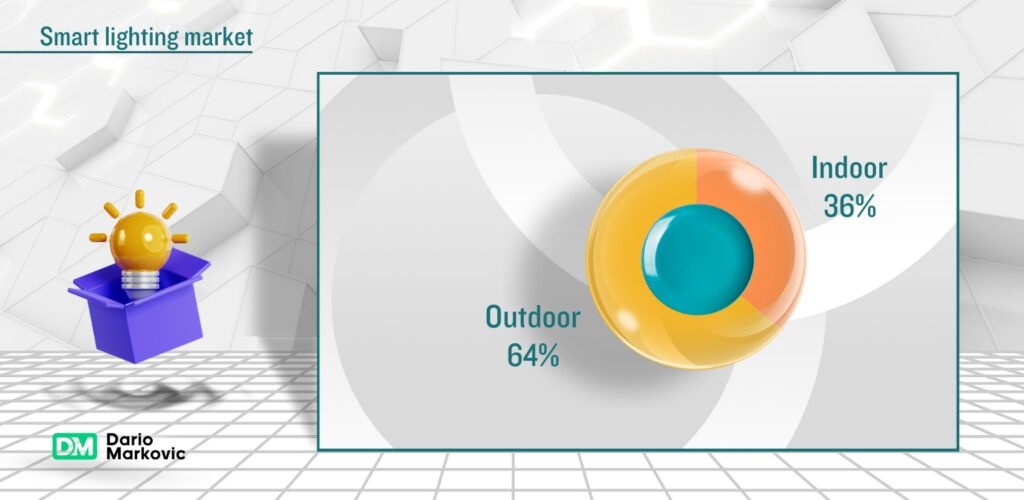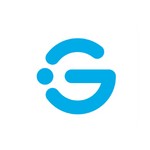Shedding Light on the Basics of Smart Lighting Products
As an entrepreneur with an eye for opportunity, you’ve probably wondered: Can I sell smart lighting products and turn a profit? Well, my fellow business maven, let’s dim the doubts and illuminate the possibilities.
So, can you sell it? Absolutely. Can you make money on it? Yes, and let’s see how.
In this blog, we’ll introduce the concept of smart lighting and how you can make a profit in that niche.
3-Point Summary
Smart Lighting Unveiled: Discover how smart lighting products are transforming homes, allowing you to control your lights with voice commands and adding a touch of magic to everyday living.
Stats That Shine: Delve into eye-opening statistics about the global smart lighting market, from its value to the dominance of wireless connectivity.
Personal Glow: Hear about my personal journey with smart lighting—how it eased late-night parenting and made my home feel like a cozy oasis.
Bright Ideas: How Smart Lighting Products Work
Let’s peel back the layers and understand the magic behind smart lighting products. From Wi-Fi connectivity to color-changing capabilities, these bulbs are like tiny tech-savvy wizards. We’ll explore the different types of smart lighting systems and how they communicate with your voice-controlled devices.

Smart Lighting Products Market: A Bright Overview
1. Market Size and Growth:
- The global smart lighting market was valued at USD 15.05 billion in 2022 and is projected to grow at a compound annual growth rate (CAGR) of 22.1% from 2023 to 2030. That’s some serious illumination!
2. Dominant Regions:
- Asia-Pacific takes center stage in smart lighting products market, driven by increasing demand from both commercial and residential applications. Within this region, China shines as the most significant contributor to global revenue and holds the largest market share worldwide.
- Europe also plays a major role, accounting for the largest revenue share (37.0%) in 2022. European countries are actively drafting safety and performance standards for indoor commercial smart lighting, including garages, roadways, and parking areas.
3. Historical Milestones:
- Let’s rewind the clock:
- 1884: The modern light switch is invented—our first step toward smart lighting control.
- 1959: The dimmer switch joins the party, allowing us to adjust light intensity.
- 1989: Short-link radio technology (which later evolves into Bluetooth) is born.
- 1992: Shuji Nakamura invents the blue LED, kickstarting the digital lighting revolution.
- 1998: DALI (Digital Addressable Lighting Interface) becomes the widely used digital lighting control protocol.
- 2006: Nokia introduces Wibree (later Bluetooth Low Energy), revolutionizing wireless communication.
- 2007: Apple launches the iPhone, igniting the smartphone revolution.
- 2011: Casambi is founded, aiming to use Bluetooth Low Energy for smart interactions with objects around us.
4. Major Players and Revenues:
- The top companies in the smart lighting market include:
- Schneider Electric SA
- Cisco Systems Inc.
- Honeywell Inc.
- Signify Holding (Philips)
- Eaton.
- These players collectively occupy over 52% of the smart lighting products market share globally.
- Their revenues contribute significantly to the industry’s growth and innovation.
5. Variety of Smart Lighting Products:
- When it comes to smart lighting, there’s no shortage of options:
- Smart Bulbs: These plug into existing light fittings and come in various types—dimming, temperature-changing, and color-changing.
- Smart Switches: Replace traditional switches and allow control via apps or voice assistants.
- Smart Light Panels: Think artistic arrangements of color-changing panels that create stunning visual effects.
- Whole Home Systems: Comprehensive solutions that integrate lighting, sensors, and automation for seamless control throughout your space.
Some Of The Best-Selling Smart Lighting Products
Philips Hue White and
Color Ambiance Bulbs
Features: These smart bulbs offer a wide spectrum of colors. You can control them via the Philips Hue app or voice assistants.
Why Choose Them?: Reliable, versatile, and compatible with various ecosystems (Alexa, Google Assistant, Apple HomeKit).
Comparison: If you want color-changing magic and fun, these bulbs are like having a mini rainbow in each socket of your home.
Nanoleaf Shapes
Light Panels
Features: These modular panels allow you to create customizable geometric designs on your walls.
Why Choose Them?: Perfect for creating eye-catching accent walls or unique home decor.
Comparison: Think of them as digital art pieces that also light up your room. And they’re a lot of fun.
LIFX A19 Smart Bulb
Features: No hub required—just screw it in and connect via Wi-Fi.
Why Choose It?: Easy setup and unmatched color accuracy.
Comparison: It is like having a mini disco ball in your lamp! All the fun is one bulb.
Govee LED Strip Lights
Features: Flexible LED strips that adhere to any surface. Control them via the Govee app or voice commands.
Why Choose Them?: Ideal for under-cabinet lighting, behind TVs, or creating ambient mood lighting.
Comparison: These strips are like hidden rainbows—subtle but impactful.
LIFX Beam Light Bars
Features: Slim, modular light bars that can be arranged in various patterns.
Why Choose Them?: Easy installation and customizable.
Comparison: Imagine having elegant light sculptures on your walls.
Cololight Pro Hexagon Panels
Features: Hexagonal panels that snap together. They offer color-changing effects and sync with music.
Why Choose Them?: Affordable and playful—great for kids’ rooms or creative spaces.
Comparison: Like building blocks that emit light.
Logitech Litra Glow Smart Table Light
Features: A portable, rechargeable table lamp with customizable colors.
Why Choose It?: Compact, versatile, and adds a touch of magic.
Comparison: Picture a glowing gem that you can carry around.
Remember, these smart lighting products cater to different needs and aesthetics. Whether you’re aiming for elegance, fun, or functionality, there’s a smart lighting solution for everything.
The Bulb Battle: Comparing Brands
We’ll pit the heavyweights against each other—Philips Hue, LIFX, and Wyze—like a boxing match for your living room. Which brand offers the brightest ideas? We’ll break down features, compatibility, and that elusive “wow” factor.
- Philips Hue:
- Color Range: Philips Hue boasts a wide spectrum of colors, from soothing warm whites to vibrant blues and greens.
- Connectivity: It’s like the well-connected socialite of the smart bulb world. Works seamlessly with voice assistants, Zigbee hubs, and even integrates with entertainment systems for synchronized light shows.
- Wow Factor: The ability to create custom scenes—whether it’s a cozy reading nook or a disco dance floor—sets Philips Hue apart.
- LIFX:
- Color Brilliance: LIFX doesn’t hold back. Its colors pop—brighter, bolder, and more vivid. If you want your living room to feel like a neon-lit art gallery, LIFX delivers.
- App Experience: The LIFX app is intuitive, allowing precise control over individual bulbs. Plus, it syncs effortlessly with music and offers dynamic effects.
- Wow Factor: Picture your space bathed in mesmerizing hues—LIFX makes it happen.
- Wyze:
- Budget Champion: Wyze bulbs are the scrappy underdog. Affordable, reliable, and surprisingly feature-packed.
- Integration: While not as flashy as the others, Wyze plays well with Amazon Alexa and Google Assistant.
- Wow Factor: It’s the Cinderella story—the bulb you didn’t expect to steal the show.
A Bullet List of Must-Have Features
- Dimmability: Set the mood from a cozy dinner to a disco party.
- Color Temperature: Warm white for reading, cool white for productivity.
- Voice Compatibility: Pick your voice buddy for Alexa, Google Assistant, or Siri.
- Energy Efficiency: Smart bulbs save both energy and your wallet.
- Automation: Lights that know when you’re home (and when you’re not).
The Grand Finale: Future Trends
What’s next? Smart lighting is evolving faster than a chameleon at a disco. We’ll peek into the crystal ball and discuss trends like Li-Fi (light-based internet) and smart outdoor lighting. Buckle up; the future is dazzling!
My Closing Words
Certainly, let’s get straight to the point. As an entrepreneur, I stumbled upon the smart lighting market. It’s not just about selling bulbs; it’s about creating experiences.
Imagine a customer—maybe your neighbor—yearning for sophistication during book club gatherings. That first sale? A flicker of hope. Brands like Philips Hue, LIFX, and Nanoleaf became my compass. Profit margins mattered—I upsold, convincing buyers that convenience and aesthetics justified the cost. The cloud versus local control debate? I balanced both. Scaling up, the Apple ecosystem beckoned.
And beyond bulbs, Li-Fi teased, while outdoor lighting also has a lot of possibilities. So, can you make money selling smart lighting? Short answer: yes. Long answer: also yes.
FAQ
- Smart lighting allows you to control your lights remotely, automate them, and adjust their brightness or color using your smartphone, voice commands, or sensors.
- Smart Bulbs: Ideal for lamps and fixtures where you want color-changing capabilities or dimming.
- Smart Switches: Replace existing switches and work with any bulb type.
- Smart Plugs: Turn any regular bulb into a smart one by plugging it into a smart outlet.
- Not always. Some systems work directly with Wi-Fi or Bluetooth, while others benefit from a hub for better connectivity and automation.
- Use timers, motion sensors, or contact sensors to trigger lighting changes automatically. For example, lights turn on when you enter a room.
- RGB: These bulbs offer red, green, and blue colors for various hues.
- RGBW: Adds a separate white LED, allowing for true warm and cool white tones.
- Absolutely! Connect your smart lights to voice assistants like Amazon Alexa, Google Assistant, or Apple HomeKit.
- Consider brightness (in lumens), color temperature (warm or cool), compatibility, and whether you want color-changing capabilities.
The Philips Hue smart bulbs are popular for their reliability, color options, and compatibility.
- Use smart switches when you want to control multiple bulbs in a room without replacing each bulb individually.
Follow the manufacturer’s instructions. Most require neutral wires and Wi-Fi connectivity.
- Smart plugs are versatile. Use them to turn any lamp or appliance into a smart device.
- Dim your bulbs to reduce energy consumption.
- Set schedules to turn off lights when not needed.
- Use motion sensors to avoid leaving lights on accidentally.
- Lighting scenes allow you to create presets for different moods or activities. For example, “Movie Night” dims the lights.
- Stick to one brand or ecosystem (e.g., all Philips Hue bulbs) to maintain consistent colors.
- As a black mother running Mama Day, I’ve found solace in smart lighting. Late-night feedings became less daunting with dimmed nursery lights. And when my toddler learned to say, “Alexa, bedtime,” it was like magic. Share your own anecdotes—how smart lighting has transformed your daily life.









